Sewage Treatment Technologies
AIMEQUIP delivers high-performance sewage treatment systems tailored to industrial, municipal, and commercial applications. Our solutions integrate proven technologies with innovative engineering to ensure reliable removal of contaminants, compliance with stringent environmental standards, and protection of public health. Whether treating domestic sewage or complex industrial effluents, our modular and customized systems provide efficiency, longevity, and operational simplicity.
Primary Treatment – Physical Separation & Flow Conditioning
Purpose:
To remove large solids, grit, and oils, preparing the sewage treatment for downstream biological treatment.
How it Works:
Primary sewage treatment is the first and most essential stage where gross pollutants are removed from raw sewage to protect downstream biological and mechanical processes. As wastewater enters the system:
- It first passes through coarse bar screens (manual or automated) to trap large debris such as rags, plastics, sticks, and packaging material.
- The screened wastewater then flows into grit removal chambers, designed to slow down flow velocity, allowing heavier inorganic particles like sand, gravel, and metal fragments to settle. These particles are mechanically or pneumatically extracted.
- Next, wastewater enters primary clarifiers, where the velocity is further reduced. Settleable solids (organic matter, sludge) accumulate at the bottom and are scraped into hoppers. Floatable materials like oils, grease, and scum rise to the surface and are skimmed off.
- In industrial applications, oil-water separators or API separators may be used to remove free and dispersed oils from wastewater.
Benefits:
- Reduces organic and solids load for downstream treatment
- Low energy consumption
- Simple operation and maintenance
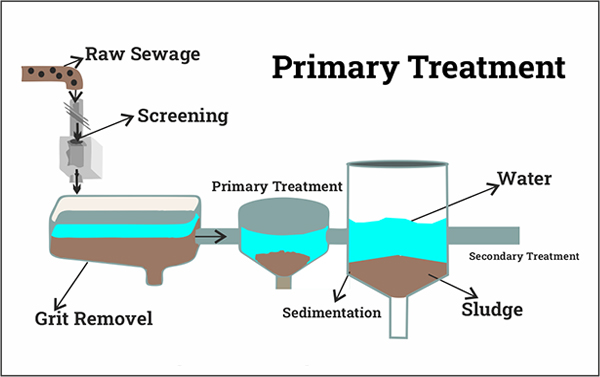

Secondary Treatment – Biological Degradation of Organics
Purpose:
To biologically remove dissolved organic matter and reduce BOD/COD levels in the sewage treatment.
How it Works:
This stage relies on aerobic or anaerobic microorganisms to digest the organic compounds that remain after primary treatment. The wastewater contains high concentrations of dissolved organics, which are metabolized by bacteria as a food source.
- In Activated Sludge Systems, air is supplied to aeration tanks using blowers and diffusers. The microorganisms form flocs that absorb and degrade organic matter. After sufficient retention time, the mixed liquor flows into a secondary clarifier, where biomass settles out and is recycled or wasted (RAS/WAS).
- MBBR systems use small plastic media with high surface area, freely suspended in aeration tanks. Biofilms grow on these carriers and degrade the organic load efficiently.
- SBR systems operate in cycles – filling, aeration, settling, decanting – all within one tank, providing flexibility in flow handling and footprint.
- In trickling filters, wastewater is distributed over media beds (stones or structured plastic). The microbial biofilm growing on the media consumes organics as water trickles through.
- For industrial wastewater or where high-strength BOD is present, anaerobic reactors (UASB, EGSB) are used to treat the waste without oxygen, generating methane-rich biogas as a byproduct.
Benefits:
- 85–95% BOD/COD removal
- Suitable for residential, municipal, and industrial waste
- Scalable for various capacities
Tertiary Treatment – Effluent Polishing & Nutrient Removal
Purpose:
To remove remaining solids, nutrients, and pathogens to meet discharge or reuse standards in sewage treatment facilities.
How it Works:
Tertiary sewage treatment ensures that the effluent is free from fine particles, residual nutrients, pathogens, and emerging contaminants.
- Filtration systems (sand filters, disc filters, cloth filters, or pressure-driven membrane systems) remove remaining suspended solids and turbidity from secondary effluent.
- To address nutrient pollution, chemical and biological processes are applied:
- Chemical precipitation involves dosing aluminum sulfate (alum) or ferric chloride to remove phosphorus, which precipitates and settles.
- Biological denitrification in anoxic zones reduces nitrates to nitrogen gas using a carbon source.
- Disinfection is essential for pathogen removal and may include:
- Ultraviolet (UV) systems that irradiate and deactivate bacteria and viruses.
- Ozone generators that oxidize a wide range of biological and chemical contaminants.
- Chlorine-based systems that are economical and provide residual protection.
Optional processes such as activated carbon adsorption or reverse osmosis (RO) are added when very high-water quality is required.
Benefits:
- Produces Class A effluent (reusable for irrigation, flushing, etc.)
- Removes residual turbidity, nutrients, and microbes
- Suitable for environmentally sensitive areas
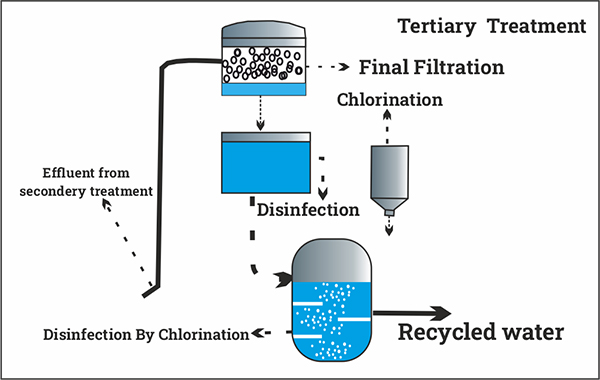
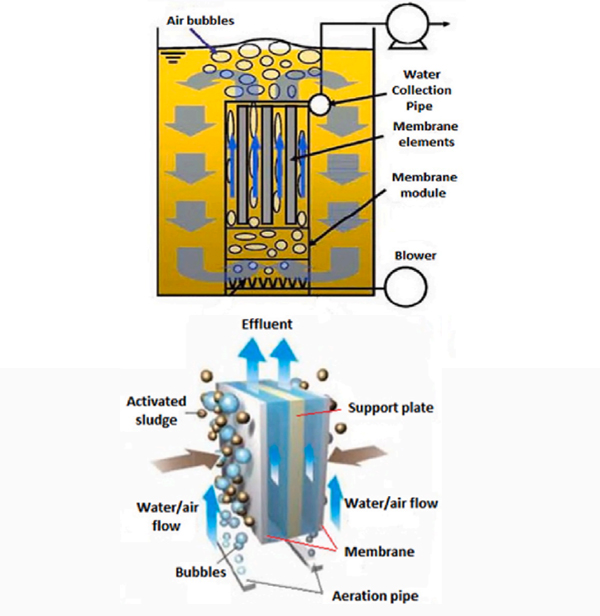
Membrane Bioreactor (MBR) Systems – High-Performance Compact Treatment
Purpose:
To treat sewage in compact areas with high-efficiency, high-quality effluent.
How it Works:
MBRs integrate aerobic biological treatment with membrane filtration in a single, compact sewage treatment system.
- Sewage first enters an aeration tank, where microorganisms digest organic matter.
- Instead of settling the biomass in a clarifier, the treated water is drawn through immersed membranes (ultrafiltration or microfiltration), which physically block suspended solids, bacteria, and even viruses.
- Air scouring keeps the membranes clean and supports microbial activity. Periodic chemical cleaning (CIP) restores membrane performance.
- The membranes are modular, and the system can be easily scaled by adding additional units.
Benefits:
- Superior effluent quality (TSS < 5 mg/L, turbidity < 0.2 NTU)
- Small footprint, ideal for space-constrained locations
- Fully automated and modular
Sludge Treatment & Dewatering – Volume and Cost Reduction
Purpose:
To reduce sludge volume and moisture content for easier disposal or reuse.
How it Works:
Sludge produced during primary and secondary sewage treatment contains up to 99% water and must be processed to reduce volume and stabilize its content.
- Thickening increases solids concentration using gravity thickeners or Dissolved Air Flotation (DAF).
- In the dewatering stage, moisture is extracted using:
- Screw presses
- Belt filter presses
- Centrifuges
- If required, lime or polymer dosing can condition the sludge to improve dewaterability.
- Further drying, pasteurization, or digestion (anaerobic or aerobic) can stabilize the sludge for safe disposal or beneficial use.
Benefits:
- Reduces sludge handling and transport costs
- Enables safe landfill, composting, or energy recovery
- Minimizes odour and pathogen risks
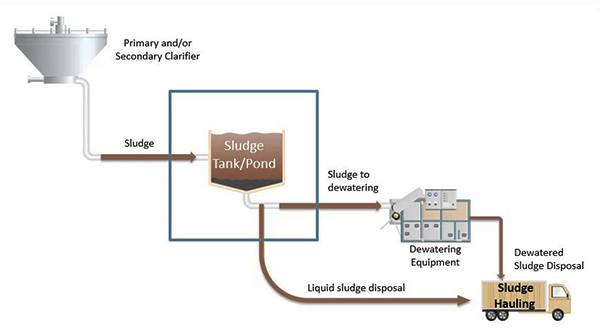
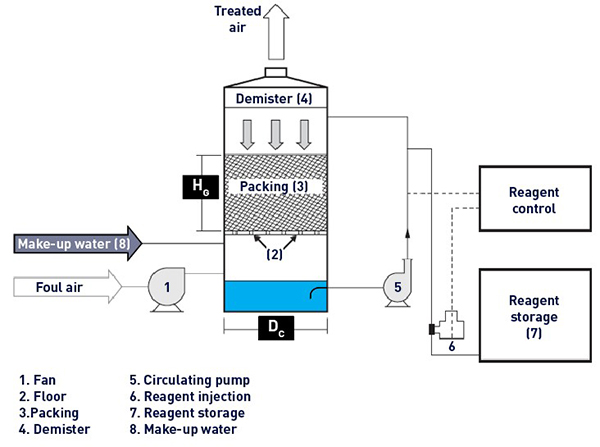
Odour Control – Environmental Compliance and Worker Safety
Purpose:
To eliminate odours caused by sewage treatment gases and protect nearby communities and facility staff.
How it Works:
Odours from sewage treatment systems are mainly caused by gases like hydrogen sulphide (H₂S), ammonia, and volatile organic compounds (VOCs).
- Emission sources (manholes, tanks, sludge units) are sealed or covered to contain gases.
- The collected air is drawn into odour treatment units, which may include:
- Biofilters: Air passes through a moist organic medium colonized by microbes.
- Chemical scrubbers: Air contacts a reactive liquid in packed towers to neutralize gases.
- Activated carbon units: Adsorb VOCs and trace compounds.
- Ozone systems: Oxidize odourous gases on contact.
Benefits:
- Improves air quality and working conditions
- Prevents corrosion of equipment
- Meets urban regulatory odour limits
Automation & Remote Monitoring – Intelligent Wastewater Management
Purpose:
To optimize sewage treatment plant operation, ensure compliance, and reduce manual labor.
How it Works:
Modern sewage treatment facilities require consistent performance and regulatory compliance. Automation ensures optimal system behavior and rapid response to changes.
- Sensors continuously monitor key parameters like flow, pH, DO, ORP, TSS, and nutrient levels.
- Programmable Logic Controllers (PLCs) process the data and make real-time control decisions for pumps, blowers, dosing, and valves.
- SCADA software provides dashboards, trend charts, and alarm logs.
- Remote access via secure platforms allows control and troubleshooting from anywhere.
Benefits:
- Reduced labor and human error
- Optimized energy and chemical usage
- Immediate alerts and troubleshooting
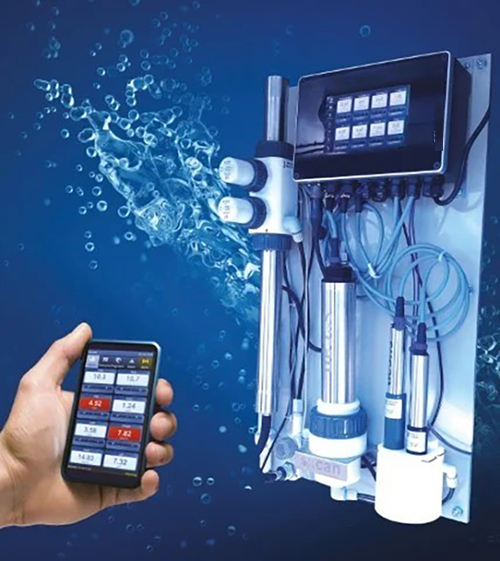
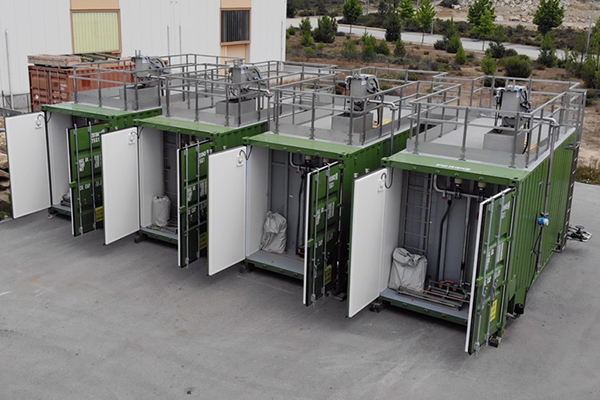
Containerized Solutions – Fast-Deploy, Modular, and Relocatable
Purpose:
To provide fast, relocatable sewage treatment options for remote or temporary applications.
How it Works:
Containerized systems are fully sewage integrated treatment plants built inside standard ISO containers.
- The container includes screening, biological treatment, filtration, disinfection, pumps, blowers, and control panels.
- On-site installation involves only connecting inlet/outlet pipes, power, and optionally, monitoring systems.
- Multiple containers can be linked together to expand capacity.
Benefits:
- Minimal site preparation and civil work
- Easy installation and relocation
- Ideal for mining, construction, and remote applications
🏭 Industries We Serve
AIMEQUIP’s sewage treatment solutions are engineered for performance across a wide range of sectors:
- Municipal Utilities: Towns, cities, and regional water authorities
- Mining & Resources: Remote camps, process water, and slurry handling
- Oil & Gas: Onshore facilities, terminals, and offshore platforms
- Food & Beverage: Dairies, breweries, meat processing, and bottling plants
- Hospitality & Tourism: Hotels, resorts, and eco-tourism destinations
- Construction & Infrastructure: Temporary sites, labor camps, and tunnel projects
- Agricultural & Livestock: Farm runoff, livestock wastewater, and irrigation reuse
- Industrial Parks: Shared or decentralized wastewater management systems
- Healthcare & Hospitals – Medical wastewater compliance and reuse
✅ Why Choose AIMEQUIP for Sewage Treatment?
🔧 Custom Engineered Systems: Designed for your exact flowrate, wastewater type, and site conditions
🌱 Sustainable & Compliant: Adheres to Australian and international effluent standards
🧰 Full Lifecycle Support: From design and installation to training and maintenance
🏗️ Experience Across Sectors: Solutions delivered for mining, food & beverage, energy, and municipal sectors
📞 Request a Consultation
Looking for a reliable sewage treatment system? Contact AIMEQUIP for tailored solutions that meet your technical and environmental goals.
